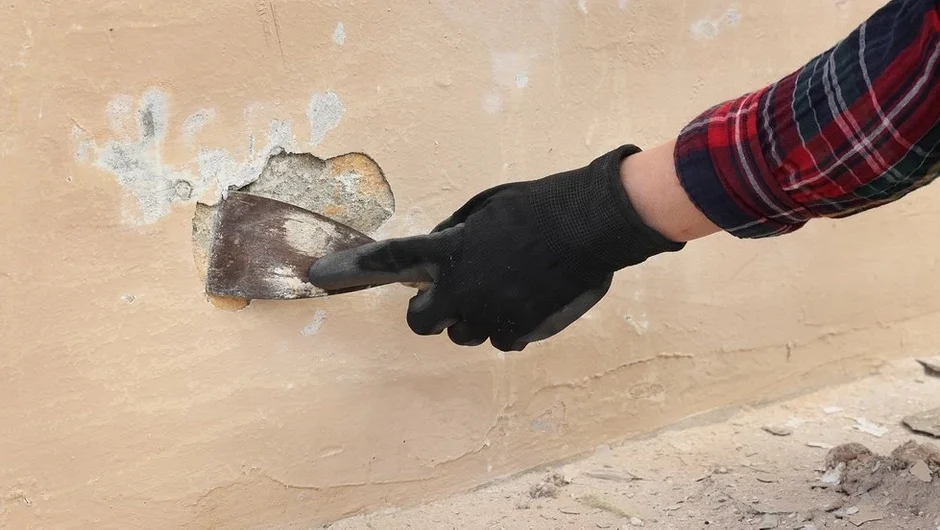We tell you how to repair a wall yourself if a crack or hole has formed in it.
How to fill a hole in the wall
In this section, we will consider situations when a hole appears in the wall – no matter how small or large. Since each material has its characteristics, we will study ways to cover holes separately for each.
In a brick wall
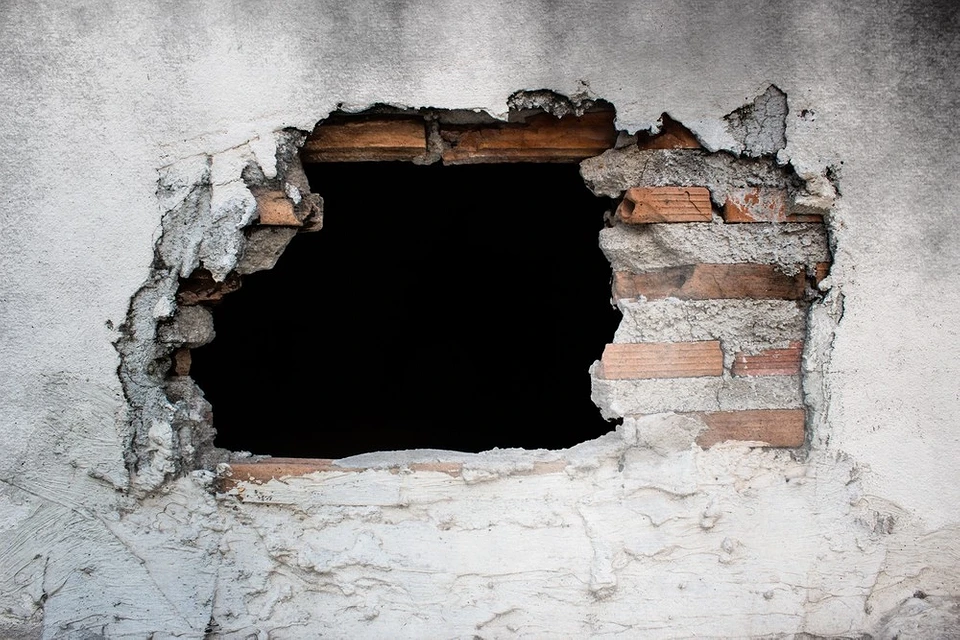
If the hole is quite large (more than 5 cm), then the integrity will have to be restored with a piece of brick of the required size. For the procedure to be successful, follow this algorithm of actions.
How to fix a big hole
- Clean the broken area from dust – it is best to do this with a vacuum cleaner.
- Wet the inner walls of the hole with a sponge or brush. The absorbed moisture will prevent the surface from strongly sucking it out of the repair solution.
- Insert a piece of brick of the appropriate size, greased with cement mixture. The remaining small gaps can be covered with plaster. All materials must be allowed to dry.
- To prevent the sealed area from standing out, cover it with plaster, covering the untouched parts. Level the surface.
- Rub the repaired area under the dried plaster clean with an abrasive mesh.
What to do with a small hole
However, much more often small defects form in the walls – you have probably encountered them when you moved a TV, or paintings to a new place, or dismantled built-in furniture. The dowels and nails leave seemingly very small, but still noticeable holes that spoil the interior with their sloppiness. Fortunately, getting rid of them is easy.
- First, you need to widen the hole. Although this seems strange at first glance, this will help the materials penetrate deeper and stick better, which will preserve the integrity of the wall in the future. Take a screw that is approximately the same diameter as the hole and twist it in all directions inside it. Also, remove excess dust with a vacuum cleaner.
- Apply the repair mixture with a spatula, deepen it as much as possible, and level the outside. As putty, you can use gypsum, alabaster, and sand-cement mixture (component proportion 3:1).
- Once dry, sand the repaired area with sandpaper.
- Then all that remains is to apply the final stage of finishing (paint, wallpaper, etc.) or carry out preparatory work for it.
In concrete wall
Although the structure of concrete is very different from a brick wall, the sequence of work to repair the damage will be approximately the same.
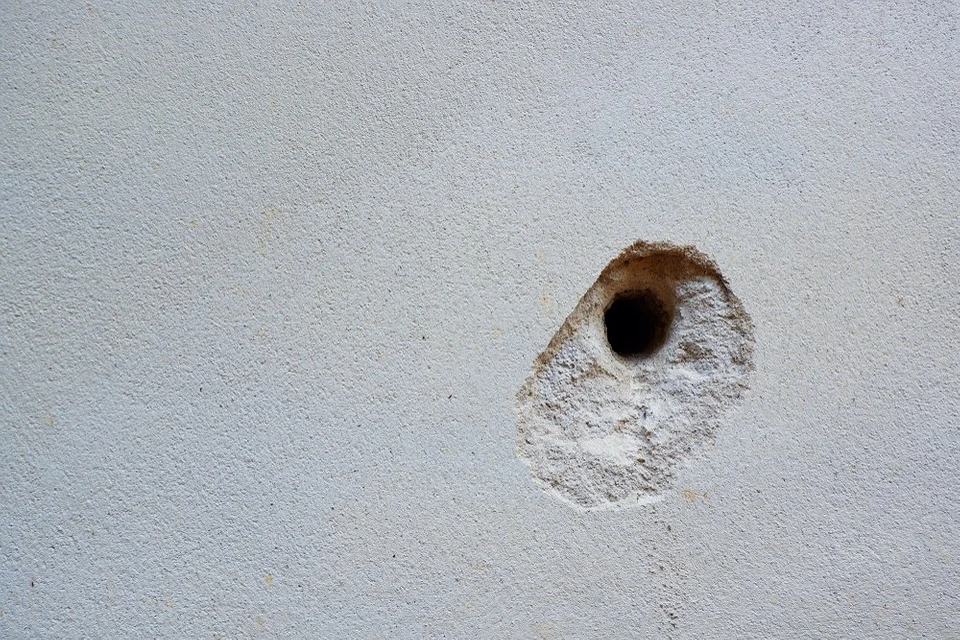
If you are dealing with a large hole, then we also clean the recess, moisten it with water, and fill it with a fragment of stone or brick. To fill a void in concrete, it will be a little more difficult to choose a suitable piece: try to fit it as much as possible in shape and size, and the remaining cracks can be covered with plaster. To secure the stone or brick inside, use the same cement mortar. Next, apply the finishing putty, level the wall, and after drying, clean the repaired area so that it blends in with the rest of the area.
For minor damage is best to seal it with plaster, applying it with a spatula deep inside. Another option for covering up holes in the wall is polyurethane foam. It is good to use if the hole is very deep. After the foam has dried, remove excess and level the surface. The surface grinding stage cannot be skipped here either.
In plasterboard wall
Drywall is an excellent material, lightweight, and easy to work with; it can be used to cover pipes, build an internal partition, insulate a room, and much more. But it is very susceptible to mechanical stress, so damage to it is not uncommon.
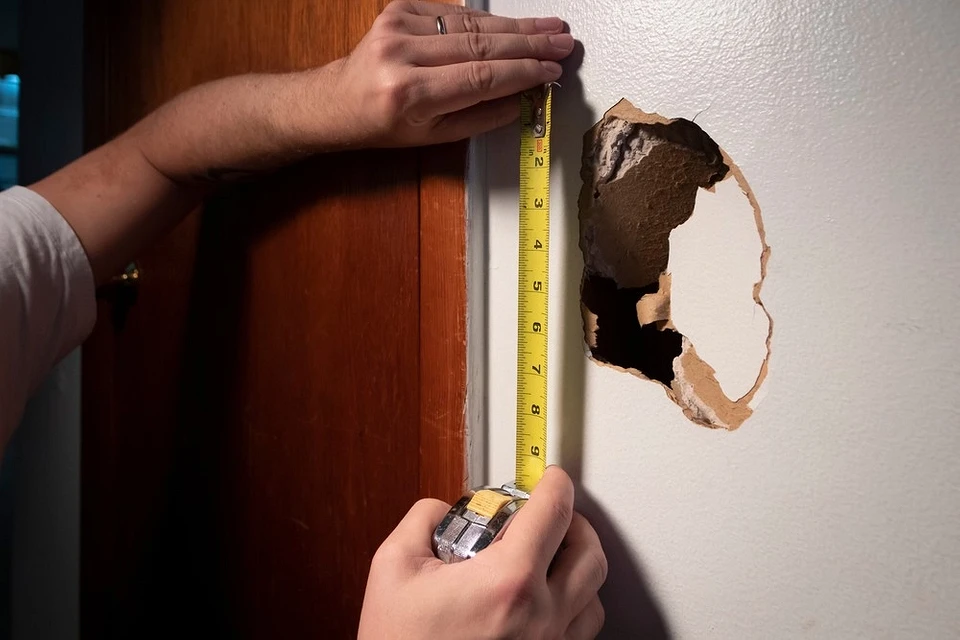
If a small hole can simply be covered with several layers of putty, filling the void inside and leveling the surface outside, then larger holes it’s a little more difficult. The following steps need to be taken.
- Use a pencil and an angled ruler to make a rectangular mark at the repair site. The “problem” area should be inside the rectangle.
- Cut this piece at a 45-degree angle with a hacksaw.
- On the inside of the gypsum board, attach a board with self-tapping screws, which will be longer, but narrower than the holes. Screw a large screw into it as a handle, which you then remove. Instead of a board, you can use several blocks, which are also attached with self-tapping screws, but along the perimeter of the cutout fragment. They should protrude from the edges.
- Cut out the same rectangle from a sheet of drywall prepared in advance. This will be a kind of patch. The edge should also be angled to fit perfectly with the hole in the wall.
- Apply this piece to the problem area and secure it to the board or bars with self-tapping screws.
- Now you need to process the seams. This can be done using serpyanka tape, onto which putty is then applied. Then you should rub the area with sandpaper and apply a finishing layer of material.
How to repair a crack in a wall
In a brick wall
Vertical cracks in brickwork can be repaired with regular foam, after drying, removing the excess and filling the area. With horizontal ones it’s a little more complicated – in this case, the cracks must be filled with some kind of material to prevent further shrinkage of the wall.
Fill a small crack with cement mortar. It is better to first make the edges of the crack at 45 degrees. Cracks approximately 5-10 mm wide are covered in almost the same way, but it is worth adding sand to the mixture. If a large crack appears in the wall, then it is recommended to completely dismantle the problematic masonry and restore it. But you can also seal it with cement, strengthening the area with anchors – there are special locks for such purposes.
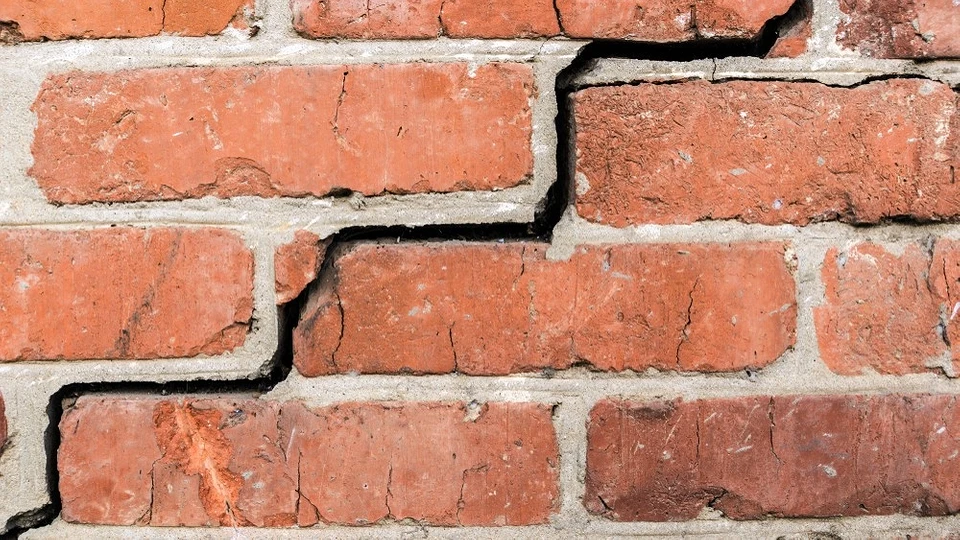
In concrete wall
To fill a gap in concrete you will need a concrete mixture- yes, it’s that simple. Before applying it, prime the chipped surface with diluted PVA construction adhesive for better adhesion. The crack will also need to be cleared along the edges at an angle of 45 degrees. An alternative way is to “clog” the gap with sealant using a construction gun. Silicone compounds cannot be used, as they do not combine well with putty and paint.
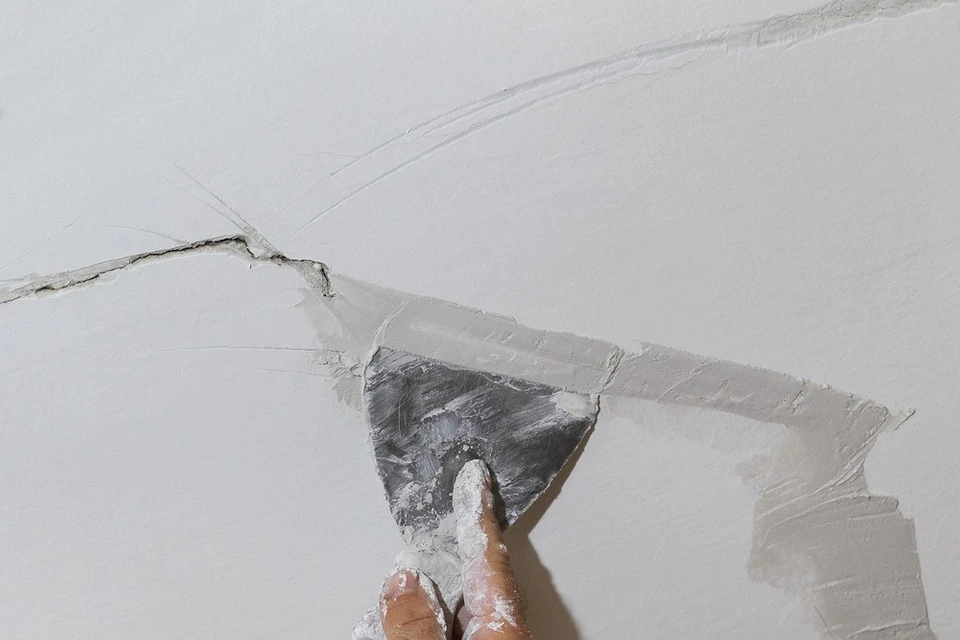
In plasterboard
If a crack is found in drywall, then the problem can be solved using a gypsum mixture or synthetic putty.
- A very narrow gap needs to be widened to at least 3 mm.
- Remove the old coating and moisten the problem area with warm water.
- After this, apply the caulking material and let it dry.
- Use a moisture-resistant putty on top and level the surface, smoothing out any unevenness.
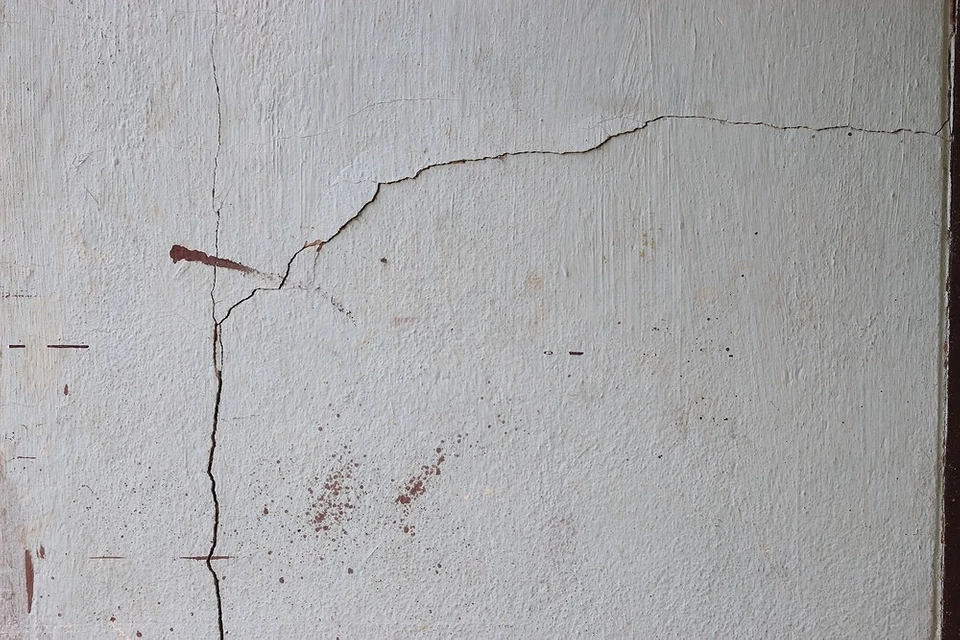
Read more: How to sand the walls after finishing putty and repair

